The formation of a special tax form in the form of a Book of Accounting for Income and Expenses for individual entrepreneurs under the general taxation regime is a requirement from the side of the law that is mandatory for application.
FILES
What is the document for?
The book of accounting for income and expenses (abbreviated as KUDiR) is necessary to calculate the taxable base of an individual entrepreneur, on the basis of which tax deductions for the reporting period will be calculated.
For each taxation system where KUDiR is required, it will have its own characteristics. An individual entrepreneur located on a common system (OSNO) must be guided by the relevant requirements. Entrepreneurs on PSN and USN will fill out KUDiR differently.
REMEMBER! On the general taxation system, only individual entrepreneurs are required to conduct KUDiR, companies are exempted from this obligation.
How is the book formed?
Filling out a book is not a one-time thing. Entries in it are made gradually, during the period of the commission of a particular operation.
Confirmation of the information entered is the primary accounting documents that the individual entrepreneur must have in stock and be stored for a certain period of time (at least three years).
All figures in KUDiR fit in the ruble equivalent.
Features and general information about KUDiR
The book has a unified form. You can conduct it both in paper form, entering the necessary data by hand, and in electronic form.
If the book is kept on a computer, after the expiration of the accounting period, it should be printed out, the sheets numbered and stitched with a thick, harsh thread. On the final page is put (if any) and the signature, and also indicates the number of pages. The book is then registered with the local tax authority.
In the case when a paper version of KUDiR is used, it is registered with the tax office before filling in.
The book includes six sections that reflect all the income and expenses of the IP made during the reporting period. It should be noted that sections are filled in, depending on the direction of work of an individual entrepreneur.
In other words, information should be entered only in those KUDiR blocks that are related to the activities of the IP.
General requirements for filling out KUDiR
If the book is not printed from electronic media, but is kept in paper form, the form must be purchased. This must be done by the entrepreneur, according to the law. The requirements for completion are:
- chronological order of reflection of income and expenses;
- confirmation of their primary documents;
- completeness and continuity of accounting data that form the tax base;
- numbering and lacing of the sheets of the book, a signature certifying the number of sheets on the last page;
- correction is allowed by carefully crossing out with one line and certifying the correction with the signature of the individual entrepreneur and the date;
- KUDiR and accounting are conducted in parallel, both are mandatory;
- at the beginning of each new reporting period, a new Book should be opened;
- completed KUDiR should be kept for 4 years.
ATTENTION! If KUDiR is kept in electronic form, which is allowed, it should be printed out and the same actions should be performed with it as with paper.
The nuances of KUDiR on OSNO
For entrepreneurs on OSNO, filling out KUDiR has a number of features.
- The cash method is used to account for the movement of funds.
- If an individual entrepreneur conducts several types of activities at once, there is no need to start a separate book for each, you can take them into account in one KUDiR, but separately.
- Information on the calculation of VAT is also entered into KUDiR.
Sample document
At the beginning of the book, on the title page, information about the individual entrepreneur is entered - this section should not cause difficulties, since information from personal and constituent documents is included here:
- residential address;
- data on the tax authority where the taxpayer was registered;
- data from the certificate of registration, etc.
It also provides information about the bank where the individual entrepreneur has an account and the cash desk number, if he uses it in his work. Then the entrepreneur puts his signature on the page and dates the form.
Completing Section 1 of the KUDiR
Raw materials, semi-finished products and other inventory items are included here, for the purchase of which the individual entrepreneur spent his money. They must be taken into account even if the expenses were made in the previous period of the report, and the de facto income occurred in the current one.
It also indicates the advances that are planned to be provided in the coming periods.
Expenses are the actual costs that have been incurred for the purpose of subsequently obtaining financial benefits from business operations.
It should be noted that the amount of financial expenses in the implementation of entrepreneurial activities is written off to costs only if the produced inventory items are sold. If for this part there are norms of expenses established by law, then accounting is carried out on the basis of them.
The first section contains several block tables. Blocks from 1-1 to 1-7 must be filled in by individual entrepreneurs who are employed in the manufacturing sector. At the same time, each block has two options, the first of which (option A) is used by entrepreneurs working with VAT, and the second (option B) is used by those who do not allocate VAT in their operations.
If you go in order, then in the table 1-1 data on the raw materials purchased and spent in the process of the IP work are entered.


The cells of block 1-2 include semi-finished products (purchased and spent) for production needs.
Block lines numbered 1-3 are designed to account for auxiliary raw materials and materials (purchased and spent).
Block 1-4 contains other material costs, i.e. energy, water, fuel, etc. which were spent in the course of the activities of the IP.


Block 1-5 indicates the price of finished products that the individual entrepreneur released for the reporting period, and also gives the cost of work performed and services rendered during this time.
Blocks 1-6 and 1-7 show the result of the production and sale of manufactured products at the time of commission and based on the results of the monthly period.




Completing Section 2 of the KUDiR
The second section of the KUDiR deals with depreciation of fixed assets, IBE and intangible assets.
Depreciation can only be calculated in relation to the property of the entrepreneur, which is purchased for cash and is used to carry out his work. Intangible assets include all types of intellectual property (trademarks, electronic programs, databases, etc.) that an individual entrepreneur uses in his activities. The rules for calculating depreciation are given in tables 3-1, 3-2, 3, 4-1, 4-2.

Completing Section 5 of the KUDiR
The fifth section of the book gives the calculation of wages and taxes. The table given here is, in fact, a payroll statement and is formed for each month separately. It contains
- calculated income tax,
- various other deductions,
- date of disbursement of funds
- and signature of the worker upon receipt.
All types of payments are entered into the table, including wages proper, material incentive payments, the price of goods issued in kind, etc.

Completing Section 6 of the KUDiR
The sixth section of KUDiR allows you to determine the tax base. It is formed after a year (according to the calendar) and is the basis for filling out the 3-NDFL form.
Block 6-1 includes income from sales indicated in Table 1-7 and others. As expenses, data from blocks 1-7, 2-1, 2-2, 3-1, 4-1, 4-2, 5-1, 6-2 are given.
Block 6-2 includes all IP expenses not shown in other blocks, including expenses for fire safety and security systems, travel expenses, fees for consulting, information and legal services. services, internet, telephone, expenses for household and repair needs, etc.


The last block of KUDIR (6-3) includes expenses made in the current period of the report, but the income for which will be taken into account in the coming period. These include seasonal expenses, rental payments, etc.

Empty KUDiR
If an individual entrepreneur did not have any cash flows for a particular reporting period, this does not mean that he should not pay attention to KUDiR. This situation obliges him to submit, along with other reports, to the tax "zero" Book. This means that you need to draw it up according to the usual requirements, just put zeros in the columns displaying the actual movement of funds.

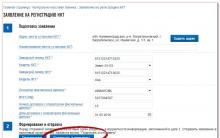
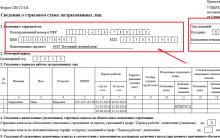
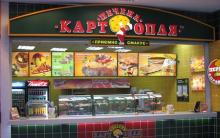
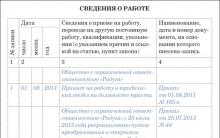
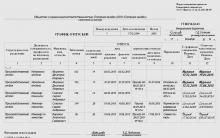





How to issue a power of attorney to represent the interests of an LLC to an individual?
How to apply for an IP: step by step instructions
Form of power of attorney to receive goods or material assets
The deadline for registering an individual entrepreneur in the tax
Business plan for a law firm: an example with calculations legal support for a business